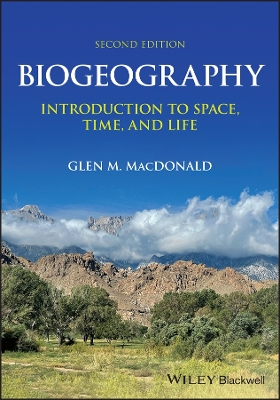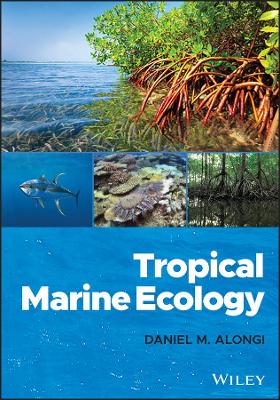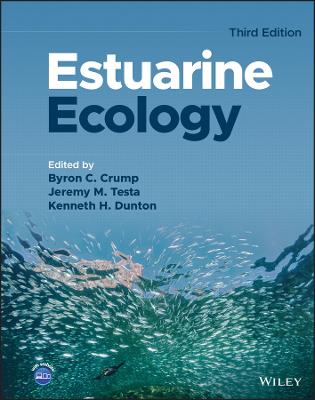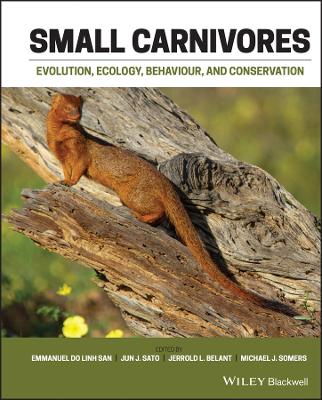Marine Ecological Field Methods
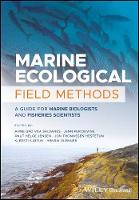 -15%
portes grátis
-15%
portes grátis
Marine Ecological Field Methods
A Guide for Marine Biologists and Fisheries Scientists
Gro Vea Salvanes, Anne; Glenner, Henrik; Sjotun, Kjersti; Devine, Jennifer; Hestetun, Jon Thomassen; Jensen, Knut Helge
John Wiley and Sons Ltd
01/2018
240
Dura
Inglês
9781119184300
15 a 20 dias
768
Descrição não disponível.
List of Contributors xi
Foreword xiii
Acknowledgements xv
1 The Marine Environment 1
Jon Thomassen Hestetun*, Kjersti Sjotun*, Dag L. Aksnes, Lars Asplin, Jennifer Devine, Tone Falkenhaug, Henrik Glenner, Knut Helge Jensen and Anne Gro Vea Salvanes* Lead authors; co-authors in alphabetical order
1.1 Marine Habitats 4
1.1.1 The Pelagic and Benthic Realms 4
1.2 The Coastal and Fjord Biotopes 5
1.2.1 The Littoral and Sublittoral Habitats 6
1.2.2 The Continental Shelf and Slope 8
1.2.3 The Deep Ocean 9
1.3 Physical Characteristics of the Pelagic System 10
1.3.1 The Light Environment 15
1.3.1.1 Inherent Optical Properties: Scattering and Absorption Coefficients 15
1.3.1.2 Visibility, Sighting Distance, and the Beam Attenuation Coefficient 16
1.3.1.3 Light Penetration and the Attenuation Coefficient of Diffuse Light 16
1.3.1.4 Photosynthetically Active Radiation (PAR) 17
1.4 Temperate Marine Communities - Environment and Organisms 18
1.4.1 Littoral Organisms 18
1.4.1.1 Species, Zonation, and Communities 18
1.4.2 Sublittoral Organisms 20
1.4.3 Demersal and Benthic Organisms 21
1.4.3.1 Bottom?]associated Organisms 21
1.4.3.2 Continental Shelf and Slope Benthos 22
1.4.3.3 Benthic Fish of the Continental Shelf and Slope 23
1.4.3.4 Deep Bottom Fish of Fjords and the Norwegian Deeps 24
1.4.4 Pelagic Organisms 24
1.4.4.1 Plankton and Micronekton 24
1.4.4.2 Pelagic Fish 28
1.4.4.3 Mesopelagic Organisms 29
1.4.4.4 Deep?]pelagic Fish 30
References 30
2 Planning Marine Field Studies 33
Jennifer Devine*, Keno Ferter, Henrik Glenner, Jon Thomassen Hestetun, Knut Helge Jensen, Leif Nottestad, Michael Pennington, David John Rees, Anne Gro Vea Salvanes, Kjersti Sjotun and Arved Staby * Lead author; co-authors in alphabetical order
2.1 Survey and Sampling Design 33
2.1.1 Survey Design 35
2.1.2 Sampling at a Station 36
2.2 Littoral Survey Design 38
2.2.1 Sampling Methods 40
2.3 Benthos Survey Design 40
2.3.1 Mapping the Biodiversity of Sognefjord - An Example of a Multi?]sampling Approach 42
2.3.1.1 The Objectives of the Project 43
2.3.1.2 Sampling Strategy and Sampling Design 43
2.3.1.3 Methods and Sampling Activities 44
2.4 Oceanic Survey Design 44
2.4.1 Pelagic Trawl Survey for Abundance Estimation of Mackerel 45
2.4.1.1 Background 45
2.4.1.2 Primary Objectives 45
2.4.1.3 Survey Design 46
2.4.1.4 Equipment 47
2.4.1.5 Sampling 47
2.4.1.6 Assumptions 47
2.4.1.7 Computations 47
2.4.1.8 Results 48
2.4.1.9 Potential Uncertainties and Bias 48
2.4.1.10 What are the Data Used for? 48
2.4.2 Bottom Trawl Surveys to Monitor Demersal Fish 49
2.4.2.1 Background 49
2.4.2.2 Primary Objectives 49
2.4.2.3 Survey Design 50
2.4.2.4 Equipment 51
2.4.2.5 Assumptions 52
2.4.2.6 Computations 53
2.4.2.7 What are the Data Used for? 53
2.5 Ecological Process Studies 54
2.5.1 Studying Diel Vertical Migration (DVM) of Mesopelagic Organisms Using Acoustics 54
2.5.1.1 Background 54
2.5.1.2 Primary Objectives 55
2.5.1.3 Survey Design 56
2.5.1.4 Equipment 56
2.5.1.5 Sampling 57
2.5.1.6 Assumptions 58
2.5.1.7 Computations 59
2.5.1.8 Results 61
2.5.1.9 Potential Uncertainties and Bias 61
2.5.1.10 What are the Data Used for? 63
2.5.2 Studying Barotrauma Impacts in Physoclistous Fish Species 63
2.5.2.1 Background 63
2.5.2.2 Primary Objectives 64
2.5.2.3 Survey Design 64
2.5.2.4 Equipment 66
2.5.2.5 Assumptions 66
2.5.2.6 Computations 66
2.5.2.7 Results 66
2.5.2.8 What are the Data Used for? 67
References 69
Further Reading 73
3 Sampling Gears and Equipment 75
Anne Gro Vea Salvanes*, Henrik Glenner*, Dag L. Aksnes, Lars Asplin, Martin Dahl, Jennifer Devine, Arill Engas, Svein Rune Erga, Tone Falkenhaug, Keno Ferter, Jon Thomassen Hestetun, Knut Helge Jensen, Egil Ona, Shale Rosen and Kjersti Sjotun * Lead authors; co-authors in alphabetical order
3.1 Sampling Organisms 75
3.1.1 Direct Observations 75
3.1.1.1 Littoral Zone Methods 75
3.1.1.2 ROV Sampling 78
3.1.1.3 Video/image?]based Methods 79
3.1.1.4 Manned Submersibles 79
3.1.1.5 Scuba Diving 79
3.1.2 Active Gears 79
3.1.2.1 Sampling Trawls (Midwater and Bottom) 79
3.1.2.2 Beach Seine 85
3.1.2.3 Plankton Nets 86
3.1.2.4 Multiple Nets 89
3.1.2.5 Sledges and Dredges 91
3.1.2.6 Grabs and Corers 94
3.1.2.7 Water Samplers 95
3.1.3 Passive Gears 98
3.1.3.1 Gillnets and Entangling Nets 98
3.1.3.2 Pots 99
3.1.3.3 Fyke Nets 100
3.1.3.4 Hook?]and?]line 101
3.1.4 Remote Sensing 101
3.1.4.1 Acoustics 101
3.1.4.2 AUVs 107
3.1.4.3 Satellite or Infrared Light 107
3.2 Sampling the Physical Environment 110
3.2.1 Conductivity, Salinity, Temperature, Oxygen 110
3.2.1.1 CTD 110
3.2.1.2 Weather Station 111
3.2.2 Light 111
3.2.2.1 Secchi Disc 111
3.2.2.2 Transmission Meters 112
3.2.2.3 PAR Sensors 112
3.2.2.4 Spectroradiometers 113
3.2.3 Currents (Direction, Speed) 113
3.2.3.1 ADCP (Acoustic Doppler Current Profiler) 113
3.2.3.2 LADCP (Lowered Acoustic Doppler Current Profiler) 116
3.2.3.3 Small Handheld ADCPs 116
3.2.3.4 Moorings with ADCPs 117
3.2.4 Sediment 117
3.3 Suitability of Equipment in Given Habitat Types 118
References 118
4 Sorting Specimens and Preserving Materials 121
Anne Gro Vea Salvanes*, Henrik Glenner*, Jennifer Devine, Jon Thomassen Hestetun, Mette Hordnes, Knut Helge Jensen, Frank Midtoy and Kjersti Sjotun * Lead authors; co-authors in alphabetical order
4.1 Sampling Diary 121
4.2 Sorting and Preserving Littoral Collections 121
4.3 Sorting Zooplankton 122
4.3.1 Procedure for Processing Small Zooplankton Samples for Total Biomass 124
4.4 Sieving and Sorting Benthic Samples 125
4.5 Fish and Nekton 126
4.5.1 Trawl Samples 126
4.5.1.1 Sorting a Codend Sample and Subsampling 129
4.5.2 Sorting Hook?]and?]Line Samples 137
4.6 Data Records 137
4.6.1 Station Records and Species Composition 138
4.6.2 Detailed Individual Measurements 142
4.6.3 Information Transfer to Data Files 142
4.7 Samples for Storage 144
4.7.1 Fixatives 145
4.7.2 Health and Security When Using Fixatives 147
References 149
5 Data Analysis 151
Knut Helge Jensen*, Jennifer Devine, Henrik Glenner, Jon Thomassen Hestetun, Anne Gro Vea Salvanes and Kjersti Sjotun * Lead authors; co-authors in alphabetical order
5.1 Scripts 151
5.2 Setting the Working Directory 152
5.3 Importing Data 153
5.4 Working with Data 155
5.4.1 Error Checking 155
5.4.2 Saving Data 159
5.5 Data Exploration and Statistical Testing 160
5.5.1 Analysis of Marine Communities 160
5.5.1.1 The Bray?]Curtis Dissimilarity Index 163
5.5.2 Physical Environment 167
5.5.3 Zooplankton Samples 170
5.5.4 Fish and Nekton 175
5.5.4.1 Hook?]and?]line 175
5.5.4.2 Trawls 175
5.5.5 Mapping 200
5.5.5.1 Making Maps with R 200
References 206
Index 209
Foreword xiii
Acknowledgements xv
1 The Marine Environment 1
Jon Thomassen Hestetun*, Kjersti Sjotun*, Dag L. Aksnes, Lars Asplin, Jennifer Devine, Tone Falkenhaug, Henrik Glenner, Knut Helge Jensen and Anne Gro Vea Salvanes* Lead authors; co-authors in alphabetical order
1.1 Marine Habitats 4
1.1.1 The Pelagic and Benthic Realms 4
1.2 The Coastal and Fjord Biotopes 5
1.2.1 The Littoral and Sublittoral Habitats 6
1.2.2 The Continental Shelf and Slope 8
1.2.3 The Deep Ocean 9
1.3 Physical Characteristics of the Pelagic System 10
1.3.1 The Light Environment 15
1.3.1.1 Inherent Optical Properties: Scattering and Absorption Coefficients 15
1.3.1.2 Visibility, Sighting Distance, and the Beam Attenuation Coefficient 16
1.3.1.3 Light Penetration and the Attenuation Coefficient of Diffuse Light 16
1.3.1.4 Photosynthetically Active Radiation (PAR) 17
1.4 Temperate Marine Communities - Environment and Organisms 18
1.4.1 Littoral Organisms 18
1.4.1.1 Species, Zonation, and Communities 18
1.4.2 Sublittoral Organisms 20
1.4.3 Demersal and Benthic Organisms 21
1.4.3.1 Bottom?]associated Organisms 21
1.4.3.2 Continental Shelf and Slope Benthos 22
1.4.3.3 Benthic Fish of the Continental Shelf and Slope 23
1.4.3.4 Deep Bottom Fish of Fjords and the Norwegian Deeps 24
1.4.4 Pelagic Organisms 24
1.4.4.1 Plankton and Micronekton 24
1.4.4.2 Pelagic Fish 28
1.4.4.3 Mesopelagic Organisms 29
1.4.4.4 Deep?]pelagic Fish 30
References 30
2 Planning Marine Field Studies 33
Jennifer Devine*, Keno Ferter, Henrik Glenner, Jon Thomassen Hestetun, Knut Helge Jensen, Leif Nottestad, Michael Pennington, David John Rees, Anne Gro Vea Salvanes, Kjersti Sjotun and Arved Staby * Lead author; co-authors in alphabetical order
2.1 Survey and Sampling Design 33
2.1.1 Survey Design 35
2.1.2 Sampling at a Station 36
2.2 Littoral Survey Design 38
2.2.1 Sampling Methods 40
2.3 Benthos Survey Design 40
2.3.1 Mapping the Biodiversity of Sognefjord - An Example of a Multi?]sampling Approach 42
2.3.1.1 The Objectives of the Project 43
2.3.1.2 Sampling Strategy and Sampling Design 43
2.3.1.3 Methods and Sampling Activities 44
2.4 Oceanic Survey Design 44
2.4.1 Pelagic Trawl Survey for Abundance Estimation of Mackerel 45
2.4.1.1 Background 45
2.4.1.2 Primary Objectives 45
2.4.1.3 Survey Design 46
2.4.1.4 Equipment 47
2.4.1.5 Sampling 47
2.4.1.6 Assumptions 47
2.4.1.7 Computations 47
2.4.1.8 Results 48
2.4.1.9 Potential Uncertainties and Bias 48
2.4.1.10 What are the Data Used for? 48
2.4.2 Bottom Trawl Surveys to Monitor Demersal Fish 49
2.4.2.1 Background 49
2.4.2.2 Primary Objectives 49
2.4.2.3 Survey Design 50
2.4.2.4 Equipment 51
2.4.2.5 Assumptions 52
2.4.2.6 Computations 53
2.4.2.7 What are the Data Used for? 53
2.5 Ecological Process Studies 54
2.5.1 Studying Diel Vertical Migration (DVM) of Mesopelagic Organisms Using Acoustics 54
2.5.1.1 Background 54
2.5.1.2 Primary Objectives 55
2.5.1.3 Survey Design 56
2.5.1.4 Equipment 56
2.5.1.5 Sampling 57
2.5.1.6 Assumptions 58
2.5.1.7 Computations 59
2.5.1.8 Results 61
2.5.1.9 Potential Uncertainties and Bias 61
2.5.1.10 What are the Data Used for? 63
2.5.2 Studying Barotrauma Impacts in Physoclistous Fish Species 63
2.5.2.1 Background 63
2.5.2.2 Primary Objectives 64
2.5.2.3 Survey Design 64
2.5.2.4 Equipment 66
2.5.2.5 Assumptions 66
2.5.2.6 Computations 66
2.5.2.7 Results 66
2.5.2.8 What are the Data Used for? 67
References 69
Further Reading 73
3 Sampling Gears and Equipment 75
Anne Gro Vea Salvanes*, Henrik Glenner*, Dag L. Aksnes, Lars Asplin, Martin Dahl, Jennifer Devine, Arill Engas, Svein Rune Erga, Tone Falkenhaug, Keno Ferter, Jon Thomassen Hestetun, Knut Helge Jensen, Egil Ona, Shale Rosen and Kjersti Sjotun * Lead authors; co-authors in alphabetical order
3.1 Sampling Organisms 75
3.1.1 Direct Observations 75
3.1.1.1 Littoral Zone Methods 75
3.1.1.2 ROV Sampling 78
3.1.1.3 Video/image?]based Methods 79
3.1.1.4 Manned Submersibles 79
3.1.1.5 Scuba Diving 79
3.1.2 Active Gears 79
3.1.2.1 Sampling Trawls (Midwater and Bottom) 79
3.1.2.2 Beach Seine 85
3.1.2.3 Plankton Nets 86
3.1.2.4 Multiple Nets 89
3.1.2.5 Sledges and Dredges 91
3.1.2.6 Grabs and Corers 94
3.1.2.7 Water Samplers 95
3.1.3 Passive Gears 98
3.1.3.1 Gillnets and Entangling Nets 98
3.1.3.2 Pots 99
3.1.3.3 Fyke Nets 100
3.1.3.4 Hook?]and?]line 101
3.1.4 Remote Sensing 101
3.1.4.1 Acoustics 101
3.1.4.2 AUVs 107
3.1.4.3 Satellite or Infrared Light 107
3.2 Sampling the Physical Environment 110
3.2.1 Conductivity, Salinity, Temperature, Oxygen 110
3.2.1.1 CTD 110
3.2.1.2 Weather Station 111
3.2.2 Light 111
3.2.2.1 Secchi Disc 111
3.2.2.2 Transmission Meters 112
3.2.2.3 PAR Sensors 112
3.2.2.4 Spectroradiometers 113
3.2.3 Currents (Direction, Speed) 113
3.2.3.1 ADCP (Acoustic Doppler Current Profiler) 113
3.2.3.2 LADCP (Lowered Acoustic Doppler Current Profiler) 116
3.2.3.3 Small Handheld ADCPs 116
3.2.3.4 Moorings with ADCPs 117
3.2.4 Sediment 117
3.3 Suitability of Equipment in Given Habitat Types 118
References 118
4 Sorting Specimens and Preserving Materials 121
Anne Gro Vea Salvanes*, Henrik Glenner*, Jennifer Devine, Jon Thomassen Hestetun, Mette Hordnes, Knut Helge Jensen, Frank Midtoy and Kjersti Sjotun * Lead authors; co-authors in alphabetical order
4.1 Sampling Diary 121
4.2 Sorting and Preserving Littoral Collections 121
4.3 Sorting Zooplankton 122
4.3.1 Procedure for Processing Small Zooplankton Samples for Total Biomass 124
4.4 Sieving and Sorting Benthic Samples 125
4.5 Fish and Nekton 126
4.5.1 Trawl Samples 126
4.5.1.1 Sorting a Codend Sample and Subsampling 129
4.5.2 Sorting Hook?]and?]Line Samples 137
4.6 Data Records 137
4.6.1 Station Records and Species Composition 138
4.6.2 Detailed Individual Measurements 142
4.6.3 Information Transfer to Data Files 142
4.7 Samples for Storage 144
4.7.1 Fixatives 145
4.7.2 Health and Security When Using Fixatives 147
References 149
5 Data Analysis 151
Knut Helge Jensen*, Jennifer Devine, Henrik Glenner, Jon Thomassen Hestetun, Anne Gro Vea Salvanes and Kjersti Sjotun * Lead authors; co-authors in alphabetical order
5.1 Scripts 151
5.2 Setting the Working Directory 152
5.3 Importing Data 153
5.4 Working with Data 155
5.4.1 Error Checking 155
5.4.2 Saving Data 159
5.5 Data Exploration and Statistical Testing 160
5.5.1 Analysis of Marine Communities 160
5.5.1.1 The Bray?]Curtis Dissimilarity Index 163
5.5.2 Physical Environment 167
5.5.3 Zooplankton Samples 170
5.5.4 Fish and Nekton 175
5.5.4.1 Hook?]and?]line 175
5.5.4.2 Trawls 175
5.5.5 Mapping 200
5.5.5.1 Making Maps with R 200
References 206
Index 209
Este título pertence ao(s) assunto(s) indicados(s). Para ver outros títulos clique no assunto desejado.
marine-data-analysis; marine biology; marine monitoring; mesopelagic sampling; remote sensing; fisheries surveys; fish sampling; plankton sampling; benthos sampling; processing-marine samples; analysing the marine environment; marine field studies; marine ecological sampling; marine ecological equipment; marine ecological methods; marine ecological analysis; marine technologies; analysing microalgae; analysing zooplankton; analysing benthos; analysing macroalgae; marine biological data collection; marine biological data handling; marine biological data analysis; marine sampling equipment; marine survey and sampling design; characteristics of marine organisms;Marine Ecological Field Methods; A Guide for Marine Biologists and Fisheries Scientists; Anne Gro Salvanes; Jennifer Devine; Knut Helge Jensen; Jon Thomassen Hestetun; Kjersti Sj?tun; Henrik Glenner
List of Contributors xi
Foreword xiii
Acknowledgements xv
1 The Marine Environment 1
Jon Thomassen Hestetun*, Kjersti Sjotun*, Dag L. Aksnes, Lars Asplin, Jennifer Devine, Tone Falkenhaug, Henrik Glenner, Knut Helge Jensen and Anne Gro Vea Salvanes* Lead authors; co-authors in alphabetical order
1.1 Marine Habitats 4
1.1.1 The Pelagic and Benthic Realms 4
1.2 The Coastal and Fjord Biotopes 5
1.2.1 The Littoral and Sublittoral Habitats 6
1.2.2 The Continental Shelf and Slope 8
1.2.3 The Deep Ocean 9
1.3 Physical Characteristics of the Pelagic System 10
1.3.1 The Light Environment 15
1.3.1.1 Inherent Optical Properties: Scattering and Absorption Coefficients 15
1.3.1.2 Visibility, Sighting Distance, and the Beam Attenuation Coefficient 16
1.3.1.3 Light Penetration and the Attenuation Coefficient of Diffuse Light 16
1.3.1.4 Photosynthetically Active Radiation (PAR) 17
1.4 Temperate Marine Communities - Environment and Organisms 18
1.4.1 Littoral Organisms 18
1.4.1.1 Species, Zonation, and Communities 18
1.4.2 Sublittoral Organisms 20
1.4.3 Demersal and Benthic Organisms 21
1.4.3.1 Bottom?]associated Organisms 21
1.4.3.2 Continental Shelf and Slope Benthos 22
1.4.3.3 Benthic Fish of the Continental Shelf and Slope 23
1.4.3.4 Deep Bottom Fish of Fjords and the Norwegian Deeps 24
1.4.4 Pelagic Organisms 24
1.4.4.1 Plankton and Micronekton 24
1.4.4.2 Pelagic Fish 28
1.4.4.3 Mesopelagic Organisms 29
1.4.4.4 Deep?]pelagic Fish 30
References 30
2 Planning Marine Field Studies 33
Jennifer Devine*, Keno Ferter, Henrik Glenner, Jon Thomassen Hestetun, Knut Helge Jensen, Leif Nottestad, Michael Pennington, David John Rees, Anne Gro Vea Salvanes, Kjersti Sjotun and Arved Staby * Lead author; co-authors in alphabetical order
2.1 Survey and Sampling Design 33
2.1.1 Survey Design 35
2.1.2 Sampling at a Station 36
2.2 Littoral Survey Design 38
2.2.1 Sampling Methods 40
2.3 Benthos Survey Design 40
2.3.1 Mapping the Biodiversity of Sognefjord - An Example of a Multi?]sampling Approach 42
2.3.1.1 The Objectives of the Project 43
2.3.1.2 Sampling Strategy and Sampling Design 43
2.3.1.3 Methods and Sampling Activities 44
2.4 Oceanic Survey Design 44
2.4.1 Pelagic Trawl Survey for Abundance Estimation of Mackerel 45
2.4.1.1 Background 45
2.4.1.2 Primary Objectives 45
2.4.1.3 Survey Design 46
2.4.1.4 Equipment 47
2.4.1.5 Sampling 47
2.4.1.6 Assumptions 47
2.4.1.7 Computations 47
2.4.1.8 Results 48
2.4.1.9 Potential Uncertainties and Bias 48
2.4.1.10 What are the Data Used for? 48
2.4.2 Bottom Trawl Surveys to Monitor Demersal Fish 49
2.4.2.1 Background 49
2.4.2.2 Primary Objectives 49
2.4.2.3 Survey Design 50
2.4.2.4 Equipment 51
2.4.2.5 Assumptions 52
2.4.2.6 Computations 53
2.4.2.7 What are the Data Used for? 53
2.5 Ecological Process Studies 54
2.5.1 Studying Diel Vertical Migration (DVM) of Mesopelagic Organisms Using Acoustics 54
2.5.1.1 Background 54
2.5.1.2 Primary Objectives 55
2.5.1.3 Survey Design 56
2.5.1.4 Equipment 56
2.5.1.5 Sampling 57
2.5.1.6 Assumptions 58
2.5.1.7 Computations 59
2.5.1.8 Results 61
2.5.1.9 Potential Uncertainties and Bias 61
2.5.1.10 What are the Data Used for? 63
2.5.2 Studying Barotrauma Impacts in Physoclistous Fish Species 63
2.5.2.1 Background 63
2.5.2.2 Primary Objectives 64
2.5.2.3 Survey Design 64
2.5.2.4 Equipment 66
2.5.2.5 Assumptions 66
2.5.2.6 Computations 66
2.5.2.7 Results 66
2.5.2.8 What are the Data Used for? 67
References 69
Further Reading 73
3 Sampling Gears and Equipment 75
Anne Gro Vea Salvanes*, Henrik Glenner*, Dag L. Aksnes, Lars Asplin, Martin Dahl, Jennifer Devine, Arill Engas, Svein Rune Erga, Tone Falkenhaug, Keno Ferter, Jon Thomassen Hestetun, Knut Helge Jensen, Egil Ona, Shale Rosen and Kjersti Sjotun * Lead authors; co-authors in alphabetical order
3.1 Sampling Organisms 75
3.1.1 Direct Observations 75
3.1.1.1 Littoral Zone Methods 75
3.1.1.2 ROV Sampling 78
3.1.1.3 Video/image?]based Methods 79
3.1.1.4 Manned Submersibles 79
3.1.1.5 Scuba Diving 79
3.1.2 Active Gears 79
3.1.2.1 Sampling Trawls (Midwater and Bottom) 79
3.1.2.2 Beach Seine 85
3.1.2.3 Plankton Nets 86
3.1.2.4 Multiple Nets 89
3.1.2.5 Sledges and Dredges 91
3.1.2.6 Grabs and Corers 94
3.1.2.7 Water Samplers 95
3.1.3 Passive Gears 98
3.1.3.1 Gillnets and Entangling Nets 98
3.1.3.2 Pots 99
3.1.3.3 Fyke Nets 100
3.1.3.4 Hook?]and?]line 101
3.1.4 Remote Sensing 101
3.1.4.1 Acoustics 101
3.1.4.2 AUVs 107
3.1.4.3 Satellite or Infrared Light 107
3.2 Sampling the Physical Environment 110
3.2.1 Conductivity, Salinity, Temperature, Oxygen 110
3.2.1.1 CTD 110
3.2.1.2 Weather Station 111
3.2.2 Light 111
3.2.2.1 Secchi Disc 111
3.2.2.2 Transmission Meters 112
3.2.2.3 PAR Sensors 112
3.2.2.4 Spectroradiometers 113
3.2.3 Currents (Direction, Speed) 113
3.2.3.1 ADCP (Acoustic Doppler Current Profiler) 113
3.2.3.2 LADCP (Lowered Acoustic Doppler Current Profiler) 116
3.2.3.3 Small Handheld ADCPs 116
3.2.3.4 Moorings with ADCPs 117
3.2.4 Sediment 117
3.3 Suitability of Equipment in Given Habitat Types 118
References 118
4 Sorting Specimens and Preserving Materials 121
Anne Gro Vea Salvanes*, Henrik Glenner*, Jennifer Devine, Jon Thomassen Hestetun, Mette Hordnes, Knut Helge Jensen, Frank Midtoy and Kjersti Sjotun * Lead authors; co-authors in alphabetical order
4.1 Sampling Diary 121
4.2 Sorting and Preserving Littoral Collections 121
4.3 Sorting Zooplankton 122
4.3.1 Procedure for Processing Small Zooplankton Samples for Total Biomass 124
4.4 Sieving and Sorting Benthic Samples 125
4.5 Fish and Nekton 126
4.5.1 Trawl Samples 126
4.5.1.1 Sorting a Codend Sample and Subsampling 129
4.5.2 Sorting Hook?]and?]Line Samples 137
4.6 Data Records 137
4.6.1 Station Records and Species Composition 138
4.6.2 Detailed Individual Measurements 142
4.6.3 Information Transfer to Data Files 142
4.7 Samples for Storage 144
4.7.1 Fixatives 145
4.7.2 Health and Security When Using Fixatives 147
References 149
5 Data Analysis 151
Knut Helge Jensen*, Jennifer Devine, Henrik Glenner, Jon Thomassen Hestetun, Anne Gro Vea Salvanes and Kjersti Sjotun * Lead authors; co-authors in alphabetical order
5.1 Scripts 151
5.2 Setting the Working Directory 152
5.3 Importing Data 153
5.4 Working with Data 155
5.4.1 Error Checking 155
5.4.2 Saving Data 159
5.5 Data Exploration and Statistical Testing 160
5.5.1 Analysis of Marine Communities 160
5.5.1.1 The Bray?]Curtis Dissimilarity Index 163
5.5.2 Physical Environment 167
5.5.3 Zooplankton Samples 170
5.5.4 Fish and Nekton 175
5.5.4.1 Hook?]and?]line 175
5.5.4.2 Trawls 175
5.5.5 Mapping 200
5.5.5.1 Making Maps with R 200
References 206
Index 209
Foreword xiii
Acknowledgements xv
1 The Marine Environment 1
Jon Thomassen Hestetun*, Kjersti Sjotun*, Dag L. Aksnes, Lars Asplin, Jennifer Devine, Tone Falkenhaug, Henrik Glenner, Knut Helge Jensen and Anne Gro Vea Salvanes* Lead authors; co-authors in alphabetical order
1.1 Marine Habitats 4
1.1.1 The Pelagic and Benthic Realms 4
1.2 The Coastal and Fjord Biotopes 5
1.2.1 The Littoral and Sublittoral Habitats 6
1.2.2 The Continental Shelf and Slope 8
1.2.3 The Deep Ocean 9
1.3 Physical Characteristics of the Pelagic System 10
1.3.1 The Light Environment 15
1.3.1.1 Inherent Optical Properties: Scattering and Absorption Coefficients 15
1.3.1.2 Visibility, Sighting Distance, and the Beam Attenuation Coefficient 16
1.3.1.3 Light Penetration and the Attenuation Coefficient of Diffuse Light 16
1.3.1.4 Photosynthetically Active Radiation (PAR) 17
1.4 Temperate Marine Communities - Environment and Organisms 18
1.4.1 Littoral Organisms 18
1.4.1.1 Species, Zonation, and Communities 18
1.4.2 Sublittoral Organisms 20
1.4.3 Demersal and Benthic Organisms 21
1.4.3.1 Bottom?]associated Organisms 21
1.4.3.2 Continental Shelf and Slope Benthos 22
1.4.3.3 Benthic Fish of the Continental Shelf and Slope 23
1.4.3.4 Deep Bottom Fish of Fjords and the Norwegian Deeps 24
1.4.4 Pelagic Organisms 24
1.4.4.1 Plankton and Micronekton 24
1.4.4.2 Pelagic Fish 28
1.4.4.3 Mesopelagic Organisms 29
1.4.4.4 Deep?]pelagic Fish 30
References 30
2 Planning Marine Field Studies 33
Jennifer Devine*, Keno Ferter, Henrik Glenner, Jon Thomassen Hestetun, Knut Helge Jensen, Leif Nottestad, Michael Pennington, David John Rees, Anne Gro Vea Salvanes, Kjersti Sjotun and Arved Staby * Lead author; co-authors in alphabetical order
2.1 Survey and Sampling Design 33
2.1.1 Survey Design 35
2.1.2 Sampling at a Station 36
2.2 Littoral Survey Design 38
2.2.1 Sampling Methods 40
2.3 Benthos Survey Design 40
2.3.1 Mapping the Biodiversity of Sognefjord - An Example of a Multi?]sampling Approach 42
2.3.1.1 The Objectives of the Project 43
2.3.1.2 Sampling Strategy and Sampling Design 43
2.3.1.3 Methods and Sampling Activities 44
2.4 Oceanic Survey Design 44
2.4.1 Pelagic Trawl Survey for Abundance Estimation of Mackerel 45
2.4.1.1 Background 45
2.4.1.2 Primary Objectives 45
2.4.1.3 Survey Design 46
2.4.1.4 Equipment 47
2.4.1.5 Sampling 47
2.4.1.6 Assumptions 47
2.4.1.7 Computations 47
2.4.1.8 Results 48
2.4.1.9 Potential Uncertainties and Bias 48
2.4.1.10 What are the Data Used for? 48
2.4.2 Bottom Trawl Surveys to Monitor Demersal Fish 49
2.4.2.1 Background 49
2.4.2.2 Primary Objectives 49
2.4.2.3 Survey Design 50
2.4.2.4 Equipment 51
2.4.2.5 Assumptions 52
2.4.2.6 Computations 53
2.4.2.7 What are the Data Used for? 53
2.5 Ecological Process Studies 54
2.5.1 Studying Diel Vertical Migration (DVM) of Mesopelagic Organisms Using Acoustics 54
2.5.1.1 Background 54
2.5.1.2 Primary Objectives 55
2.5.1.3 Survey Design 56
2.5.1.4 Equipment 56
2.5.1.5 Sampling 57
2.5.1.6 Assumptions 58
2.5.1.7 Computations 59
2.5.1.8 Results 61
2.5.1.9 Potential Uncertainties and Bias 61
2.5.1.10 What are the Data Used for? 63
2.5.2 Studying Barotrauma Impacts in Physoclistous Fish Species 63
2.5.2.1 Background 63
2.5.2.2 Primary Objectives 64
2.5.2.3 Survey Design 64
2.5.2.4 Equipment 66
2.5.2.5 Assumptions 66
2.5.2.6 Computations 66
2.5.2.7 Results 66
2.5.2.8 What are the Data Used for? 67
References 69
Further Reading 73
3 Sampling Gears and Equipment 75
Anne Gro Vea Salvanes*, Henrik Glenner*, Dag L. Aksnes, Lars Asplin, Martin Dahl, Jennifer Devine, Arill Engas, Svein Rune Erga, Tone Falkenhaug, Keno Ferter, Jon Thomassen Hestetun, Knut Helge Jensen, Egil Ona, Shale Rosen and Kjersti Sjotun * Lead authors; co-authors in alphabetical order
3.1 Sampling Organisms 75
3.1.1 Direct Observations 75
3.1.1.1 Littoral Zone Methods 75
3.1.1.2 ROV Sampling 78
3.1.1.3 Video/image?]based Methods 79
3.1.1.4 Manned Submersibles 79
3.1.1.5 Scuba Diving 79
3.1.2 Active Gears 79
3.1.2.1 Sampling Trawls (Midwater and Bottom) 79
3.1.2.2 Beach Seine 85
3.1.2.3 Plankton Nets 86
3.1.2.4 Multiple Nets 89
3.1.2.5 Sledges and Dredges 91
3.1.2.6 Grabs and Corers 94
3.1.2.7 Water Samplers 95
3.1.3 Passive Gears 98
3.1.3.1 Gillnets and Entangling Nets 98
3.1.3.2 Pots 99
3.1.3.3 Fyke Nets 100
3.1.3.4 Hook?]and?]line 101
3.1.4 Remote Sensing 101
3.1.4.1 Acoustics 101
3.1.4.2 AUVs 107
3.1.4.3 Satellite or Infrared Light 107
3.2 Sampling the Physical Environment 110
3.2.1 Conductivity, Salinity, Temperature, Oxygen 110
3.2.1.1 CTD 110
3.2.1.2 Weather Station 111
3.2.2 Light 111
3.2.2.1 Secchi Disc 111
3.2.2.2 Transmission Meters 112
3.2.2.3 PAR Sensors 112
3.2.2.4 Spectroradiometers 113
3.2.3 Currents (Direction, Speed) 113
3.2.3.1 ADCP (Acoustic Doppler Current Profiler) 113
3.2.3.2 LADCP (Lowered Acoustic Doppler Current Profiler) 116
3.2.3.3 Small Handheld ADCPs 116
3.2.3.4 Moorings with ADCPs 117
3.2.4 Sediment 117
3.3 Suitability of Equipment in Given Habitat Types 118
References 118
4 Sorting Specimens and Preserving Materials 121
Anne Gro Vea Salvanes*, Henrik Glenner*, Jennifer Devine, Jon Thomassen Hestetun, Mette Hordnes, Knut Helge Jensen, Frank Midtoy and Kjersti Sjotun * Lead authors; co-authors in alphabetical order
4.1 Sampling Diary 121
4.2 Sorting and Preserving Littoral Collections 121
4.3 Sorting Zooplankton 122
4.3.1 Procedure for Processing Small Zooplankton Samples for Total Biomass 124
4.4 Sieving and Sorting Benthic Samples 125
4.5 Fish and Nekton 126
4.5.1 Trawl Samples 126
4.5.1.1 Sorting a Codend Sample and Subsampling 129
4.5.2 Sorting Hook?]and?]Line Samples 137
4.6 Data Records 137
4.6.1 Station Records and Species Composition 138
4.6.2 Detailed Individual Measurements 142
4.6.3 Information Transfer to Data Files 142
4.7 Samples for Storage 144
4.7.1 Fixatives 145
4.7.2 Health and Security When Using Fixatives 147
References 149
5 Data Analysis 151
Knut Helge Jensen*, Jennifer Devine, Henrik Glenner, Jon Thomassen Hestetun, Anne Gro Vea Salvanes and Kjersti Sjotun * Lead authors; co-authors in alphabetical order
5.1 Scripts 151
5.2 Setting the Working Directory 152
5.3 Importing Data 153
5.4 Working with Data 155
5.4.1 Error Checking 155
5.4.2 Saving Data 159
5.5 Data Exploration and Statistical Testing 160
5.5.1 Analysis of Marine Communities 160
5.5.1.1 The Bray?]Curtis Dissimilarity Index 163
5.5.2 Physical Environment 167
5.5.3 Zooplankton Samples 170
5.5.4 Fish and Nekton 175
5.5.4.1 Hook?]and?]line 175
5.5.4.2 Trawls 175
5.5.5 Mapping 200
5.5.5.1 Making Maps with R 200
References 206
Index 209
Este título pertence ao(s) assunto(s) indicados(s). Para ver outros títulos clique no assunto desejado.
marine-data-analysis; marine biology; marine monitoring; mesopelagic sampling; remote sensing; fisheries surveys; fish sampling; plankton sampling; benthos sampling; processing-marine samples; analysing the marine environment; marine field studies; marine ecological sampling; marine ecological equipment; marine ecological methods; marine ecological analysis; marine technologies; analysing microalgae; analysing zooplankton; analysing benthos; analysing macroalgae; marine biological data collection; marine biological data handling; marine biological data analysis; marine sampling equipment; marine survey and sampling design; characteristics of marine organisms;Marine Ecological Field Methods; A Guide for Marine Biologists and Fisheries Scientists; Anne Gro Salvanes; Jennifer Devine; Knut Helge Jensen; Jon Thomassen Hestetun; Kjersti Sj?tun; Henrik Glenner

